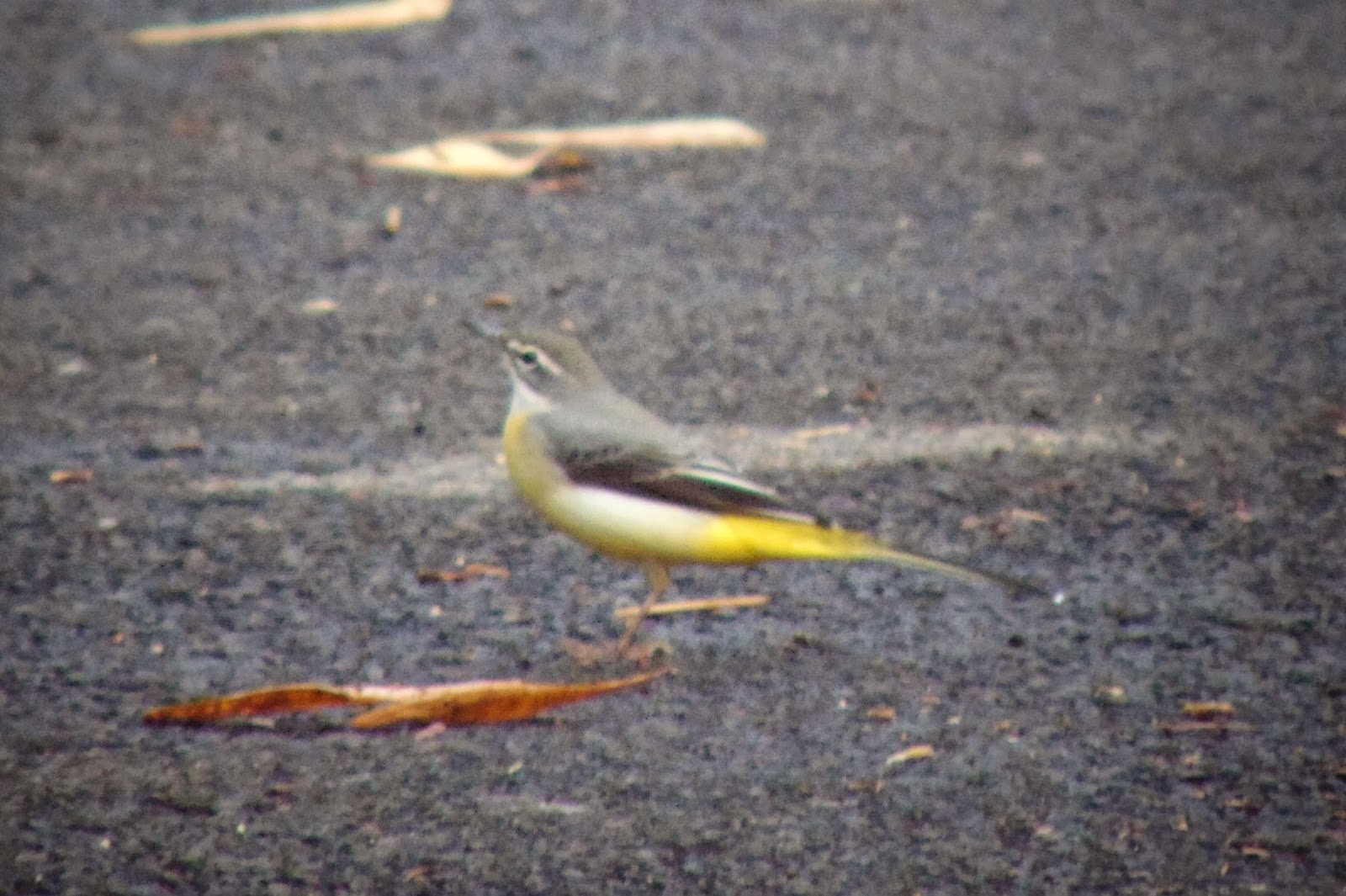The grey wagtail
(Motacilla cinerea) is a small member of the wagtail family, Motacillidae.
The species looks similar to the yellow wagtail but has the yellow on its
underside restricted to the throat and vent. Breeding
males have a black throat. The species is widely distributed, with several
populations breeding in Europe and Asia and migrating to tropical regions in
Asia and Africa. They are usually seen on open marshy ground or meadows where
they walk solitarily or in pairs along the ground, capturing insects that are
disturbed. Like other wagtails, they frequently wag their tail and fly low with
undulations and they have a sharp call that is often given in flight. This
species was first described by Marmaduke
Tunstall in his 1771 Ornithologia Britannica This slim wagtail has a narrow
white supercilium and a broken eye ring. The upperparts are grey and the yellow
vent contrasting with whitish underparts makes it distinctive. The breeding
male has a black throat that is edged by whitish moustachial stripes. They
forage singly or in pairs on meadows or on shallow water marshes. They also use
rocks in water and will often perch on trees. They have a clear sharp call note
and the song consists of trills. The
bird is widely distributed across the Palearctic region with several well
marked populations. The nominate form (includes caspica of Iran, Turkey
and the Caucasus) is from western Europe including the British Isles,
Scandinavia and Mediterranean region. Race melanope, which is not well
separated from the nominate subspecies, is described as the population breeding
in eastern Europe and central Asia mainly along the mountain chains of the
Urals, Tien Shan and along the Himalayas. They winter in Africa and Asia. Race robusta
breeds along the Northeastern parts of Asia in Siberia extending to Korea and
Japan. They sometimes occur on the islands to the West of Alaska but have been
known to occur further south in California as a vagrant. The
nest is placed near fast running streams or rivers on an embankment between
stones and roots. The male in display, makes short flights up into the air and
descends slowly with fluttering flight accompanied by a rapid series of
chipping high notes. In Europe the nests are often made in holes in manmade
structures. The clutch consists of 3–6 speckled eggs and multiple broods may be
raised with declining numbers in the clutch in subsequent broods. The usual
clutch size is five in Ireland and the breeding success is about 80% with
predation of eggs or chicks being the main cause of breeding failure. The
Canary Islands population typically have smaller clutches and the breeding
season is not as short and well marked as in populations at higher latitudes.
The incubation period is about two weeks with chicks fledging within a
fortnight. They live for a maximum of 8 years in the wild. These
birds feed on a variety of aquatic invertebrates including adult flies,
mayflies, beetles, crustacea and molluscs. They often forage along roadsides in
winter, flushing with a sharp chi-cheep call and flying up further along
the road but after some distance turning back to return to the original
location. In winter, they roost in small groups. Wintering birds have been
known to return to the same sites, sometimes a small urban garden, each year.






No comments:
Post a Comment